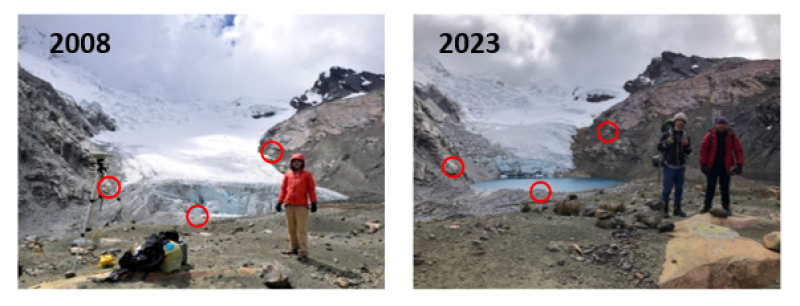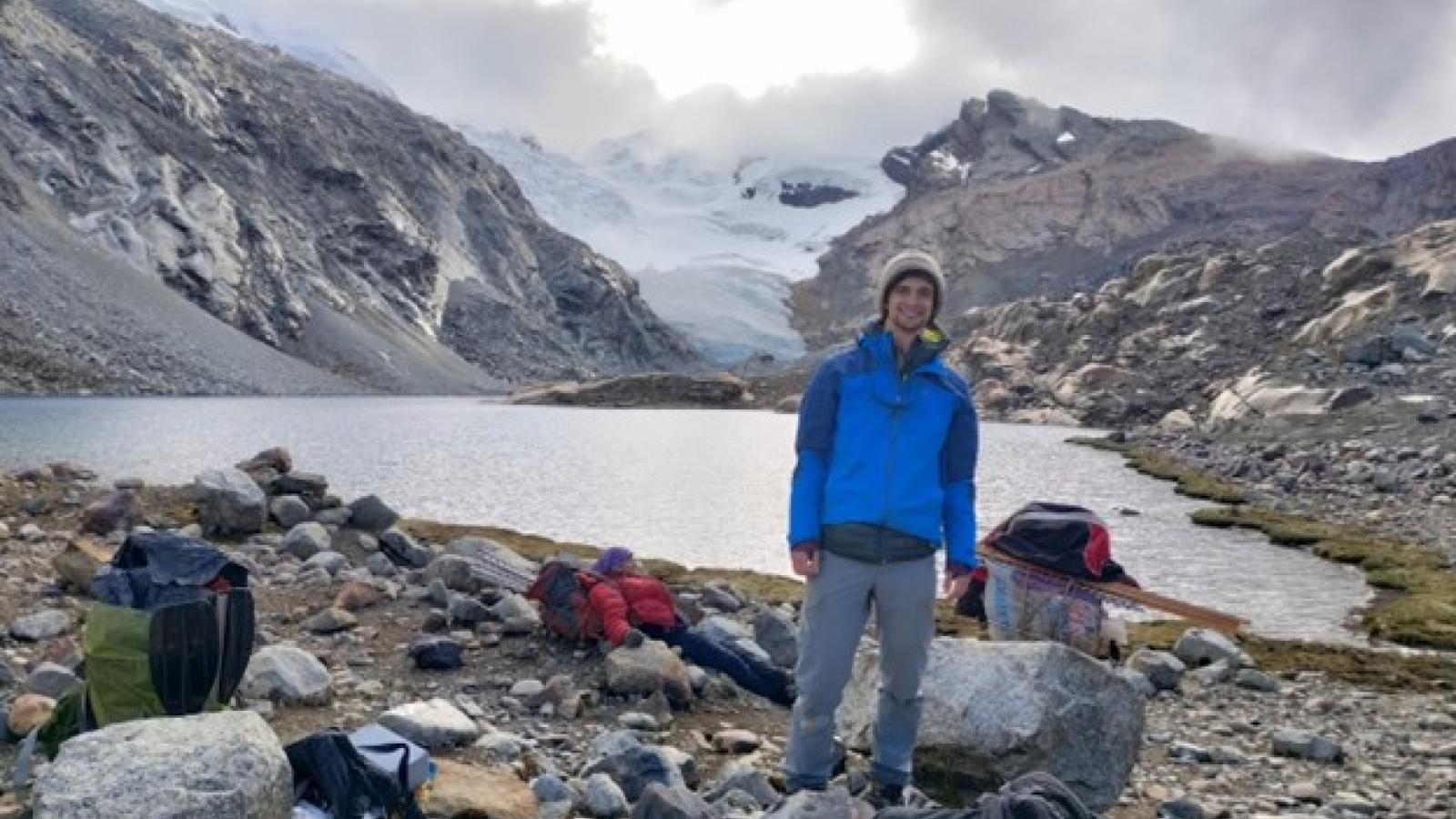In June of 2023, Ph.D. student and Glacier Environmental Change Group member Tal Shutkin joined researchers from the Autoridad Nacional del Agua in Peru on an expedition to measure the ice thickness of Queshque Glacier, located in Peru’s Cordillera Blanca. This was the third ground-penetrating radar (GPR) survey of Queshque that members of the GEC group have been involved in. Tal uses the resulting ice thickness maps to calculate changes in ice volume and to calibrate important parameters in glacier flow models. These surveys, in combination with remotely sensed datasets, show that Queshque Glacier has not only retreated over the past 15 years but thinned rapidly. In total, Tal’s modeled estimates suggest that the glacier has lost over 25 million m3 of water (equivalent to 10,000 Olympic swimming pools) since 2008 alone.

While fieldwork is essential for generating observational insights, glaciological modeling allows for the testing of hypotheses concerning the drivers and processes behind ice loss. Tal’s work using the Open Global Glacier Model shows that climate change can account for about 90% of glacier mass loss since 2008. However, to reproduce the full scale of observed loss, it is necessary to account for non-climatic feedback associated with the formation of a new lake at the base of the glacier. In summary, the Queshque Glacier project highlights the importance of combining models and observations to understand rapidly changing mountain environments.

